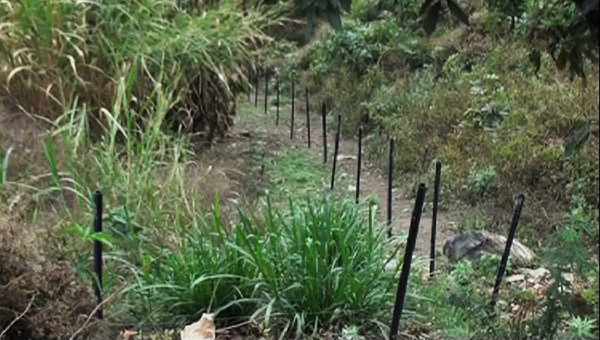 The Agriculture and Research Development Center (ARDC) in Monggar has come up with an alternative for wooden poles used in electric fencing. The centre is currently trying the substitute, high-density polyethene (HDPE) poles in two gewogs.
The Agriculture and Research Development Center (ARDC) in Monggar has come up with an alternative for wooden poles used in electric fencing. The centre is currently trying the substitute, high-density polyethene (HDPE) poles in two gewogs.
This is mainly to minimise the use of wooden poles and consequently minimise the impact on the environment for such needs.
The centre recently installed electric fencing using HDPE poles in Drepoong Gewog as part of its second pilot project. The first was carried out in Saling Gewog covering over seven acres of fields. The Bhutan Trust Fund for Environmental Conversation funded both the projects.
“In the year 2016, I think our centre has submitted a proposal to Bhutan Trust Fund for Environmental Conservation (BTFEC) regarding the problem and how to mitigate that problem. In 2017, we have been awarded the grant from BTFEC. And our main objective for proposing that project is like we want to come up with an alternative pole in place of wooden poles,” said Geley Namgay, the Plant Protection Officer at the ARDC in Monggar.
He said HDPE poles are more durable as compared to wooden poles. However, its cost is almost three folds higher. While installing a kilometre of conventional electric fencing roughly costs Nu 60,000, for the same distance using HDPE poles, the expenditure is almost Nu 170,000.
Alongside finding a substitute for wooden poles, the centre has assembled an alarm system to chase away wild animals. The bio-acoustic device produces different sounds of animals.
“We have installed one at Dheydrang in Monggar Dzongkhag only. This is the first year and we received positive feedback from the farmers. But the biggest worry for us, being a researcher is, like how it will work in future. Being a sound-based system may be the animals might get habituated to that sound and they might come to farm in future,” he added.
Currently, the alarm is operated manually using a switch system. But there are plans to make it automatic.
Meanwhile, since 2018, the government provided nearly 3500 kilometres of electric fencing to farmers.
Sonam Tshering












